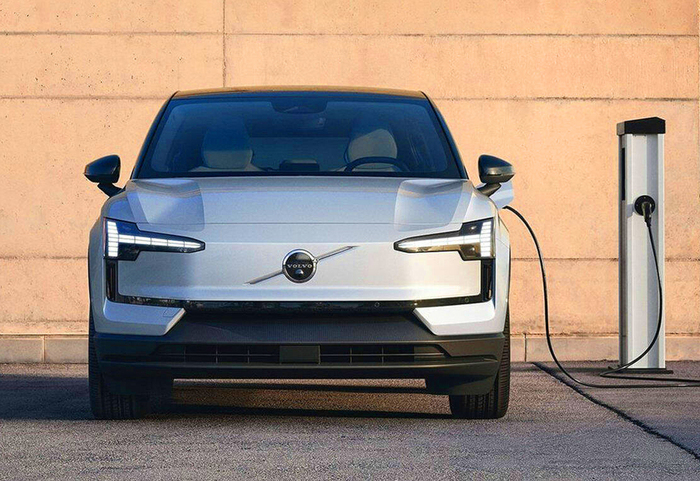Extreme weather has brought severe challenges to the world in recent years, and the climate crisis is obviously imminent.
In order to support Hong Kong's goal of achieving carbon neutrality by 2050, CLP Power (CLP) actively promotes deep carbon reduction, and implements low-carbon power generation in both supply and demand, including phasing out coal-fired power generation and developing local renewable energy. Energy, strengthen regional cooperation to introduce new zero-carbon energy, research and develop new technologies such as green hydrogen energy, and promote electrification to reduce carbon emissions; and encourage customers to protect the environment and save energy.
In line with the government's long-term carbon reduction strategy in the "Hong Kong Climate Action Blueprint 2050", and striving to achieve carbon neutrality by 2050, CLP is committed to promoting energy transformation and has added two new gas-fired generating units at the Lung Kwu Tan Power Plant, the first one. The D1 unit has been put into operation in 2020, and another gas-fired unit, D2, is expected to be put into operation before the end of 2023 to increase the proportion of natural gas power generation and phase out coal-fired power generation.
At the same time, CLP is building an offshore LNG terminal and adopting floating storage and regasification technology, which can further reduce the carbon intensity of power generation after it is put into use.
CLP will discuss with the government the phasing out of coal-fired power generation at Castle Peak Power Plant B in the 2030s, and the older coal-fired generating units at Castle Peak Power Plant A will also be phased out in the next few years.
After CLP's new D1 gas-fired generator set comes into operation in 2020, its local gas-fired power generation ratio will increase to about 50%.
Develop renewable energy and explore new zero-carbon technologies
CLP launched the "Renewable Energy Feed-in Tariff" scheme in 2018. As of the end of September this year, it has received about 22,000 applications, and the response is positive; the total power generation capacity that has been approved or connected to the grid is 327 MW, which is equivalent to about 22,000 applications. Annual electricity consumption of 73,900 households.
In addition, CLP said that wind power technology and equipment have become more mature and more cost-effective in the past decade, and it is actively promoting the feasibility of the offshore wind farm project in Hong Kong, and plans to incorporate the project into the development plan from 2024 to 2028.
In terms of turning waste into energy, CLP's power generation project "CLP Green Source" in the West New Territories Landfill uses biogas generated from the landfill to generate electricity and connect it to the grid.
CLP Power is actively promoting offshore wind farms. The picture shows a schematic view of the offshore wind farm from the viewing position of Dalingdong in Clear Water Bay Country Park.
Multi-fuel mix stabilizes electricity prices
A diversified fuel mix is essential for power companies to maintain a stable and affordable electricity supply.
Jiang Dongqiang, President of CLP Power, said, "In the process of implementing low-carbon power generation, we will do our best to maintain a highly safe and reliable power supply for our customers." In addition to renewable energy, nuclear power plays an important role. About a quarter of Hong Kong's One's electricity supply comes from the Guangdong Daya Bay Nuclear Power Plant, which imports nearly zero-emission nuclear power, enabling the local area to avoid more than 7.5 million tons of carbon dioxide emissions every year.
CLP and the government are studying to strengthen regional cooperation in zero-carbon energy, exploring more zero-carbon energy supply with surrounding areas, including seeking opportunities for co-investment and joint development, and participating in and operating zero-carbon energy projects near Hong Kong.
At present, CLP Group and General Electric (GE) have signed a memorandum of cooperation to explore the use of the latest technology to upgrade local gas-fired power generation infrastructure and support the use of hydrogen and other low-carbon fuels for power generation.
Nearly 20% of Hong Kong’s greenhouse gas emissions come from transportation. In order to further reduce carbon emissions, CLP has cooperated with stakeholders to promote the electrification of public transportation and commercial vehicles, and also cooperated with the “Easy Charging Subsidy Scheme for EV Housing Estates” launched by the government. Provide electric vehicle charging support services for car parks of private residential buildings.
CLP actively promotes the development of local renewable energy and launched the "Fit-In Tariff" scheme, which has received positive feedback.
Make good use of innovative technology to work with customers to save energy and reduce emissions
The important task of carbon reduction requires public investment. In order to help customers manage electricity demand, promote energy conservation, and support the development of local renewable energy, CLP has launched a series of energy efficiency plans and support measures, such as the Green Building Fund, the energy-saving equipment upgrade plan, Validating engineering training programmes, renewable energy certificates and applying innovative technologies including the installation of smart meters support customers in reducing their carbon footprint.
As of the end of September this year, CLP has installed and connected more than 1.63 million smart meters for customers, allowing them to master detailed electricity consumption data and change their electricity habits to reduce electricity consumption.
CLP also promotes the community to move towards a low-carbon green life through public education work on energy conservation and environmental protection covering the entire educational process from kindergarten to university.
International fuel prices soar, many countries around the world experience energy crisis
International fuel prices have continued to rise over the past year, and global fuel supply has become tight due to geopolitical and market factors.
In the case of Brent crude oil, prices have soared by about 65% from the beginning of 2021 to the end of September 2022, while the prices of coal and natural gas have also soared.
Due to extremely volatile fuel costs, electricity bills for residential customers in many countries around the world have also been increasing. For example, Tokyo, Singapore, Berlin and London have recorded increases of 44% to 102% respectively from 2021 to September this year.
Global energy costs are rising, and Hong Kong's "fuel adjustment fee" is no exception.
Former Energy Advisory Committee member and associate professor of the Department of Finance and Decision Sciences of Hong Kong Baptist University, Mak Cui Cai explained, "The fuel cost reflects the cost of energy, and due to factors such as the Russian-Ukrainian war, the fuel price has been rising in the past few months, which has caused considerable damage to the electricity bill. However, since a considerable part of CLP's fuel mix consists of nuclear power, which helps to ease electricity prices, the increase has been relatively stable."
International fuel prices have continued to rise for more than a year, and the price of Brent crude oil has surged by about 65% from the beginning of 2021 to the end of September this year, which is very volatile.
(Source: World Bank)
The impact of the energy crisis on Hong Kong's electricity prices
The electricity price is composed of the basic electricity price and the fuel adjustment fee. The "fuel adjustment fee" is adjusted monthly, which can go up or down to reflect the fluctuation of the international market and the actual fuel cost of the power company.
CLP's fuel costs are charged to customers on an "off-the-shelf" basis and do not make a profit.
As CLP uses a diversified fuel mix, including natural gas, coal and renewable energy, and imports nuclear power with relatively stable prices, nuclear power plays an important role in reducing the impact of market volatility when international fuel costs continue to soar.
CLP also strives to purchase fuel at competitive prices by optimizing the efficiency of its generating units and selecting different suppliers.
At the same time, the "Fuel Price Adjustment Clause Account" under the Scheme of Control Agreement is used to alleviate the impact of fuel costs.
CLP expects that international fuel prices will continue to fluctuate in the future, fuel costs will continue to be under heavy pressure, and electricity prices for customers will inevitably be affected.
(Information and photos provided by CLP)














